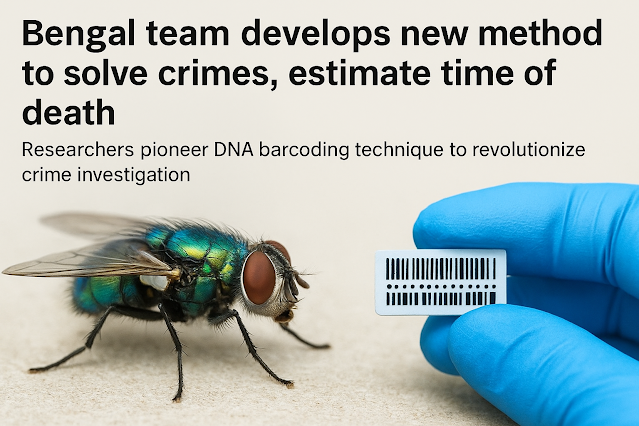Bengal team develops new method to solve crimes, estimate time of death
“For years, forensic investigators have used the developmental stages of blow fly larvae, or maggots, to estimate the Post-Mortem Interval (PMI)—the time since death. However, accurately identifying the specific fly species from its immature stages has been a significant challenge. This new research solves that problem by using DNA barcoding,” said Dhriti Banerjee, Director of Zoological Survey of India (ZSI), who led the study along with scientist Atanu Naskar.
The ZSI team collected 2,977 blow fly specimens from four distinct regions across Bengal. They targeted a specific mitochondrial gene region known as Cytochrome Oxidase I (COI), often referred to as a “DNA barcode”. The analysis of these samples led to identification of 17 distinct blow fly species, each with a unique genetic fingerprint. The genetic variation within the same species was remarkably low (0–1 per cent), while the variation between different species was much higher (up to 12.29 per cent), making species identification clear and precise.
“Instead of waiting for flies to mature, investigators can now get a species ID from a single maggot or even eggs within hours. This drastically speeds up investigations and provides more accurate timelines. This is a game change for PMI estimation,” Banerjee added.
The study’s findings were rigorously validated using four internationally recognised methods, all of which confirmed that each species formed distinct genetic clusters. This breakthrough elevates the humble blow fly from a simple decay indicator to a powerful scientific witness.
“Forensic science has traditionally focused on the human body. Our research demonstrates that nature itself offers vital evidence. The fly’s DNA is a language we’ve now learned to interpret,” said Naskar.
Oishik Kar, one of the researchers, highlighted the global potential of this work, likening the fly’s DNA barcode to an “Aadhaar card for flies.” The team’s findings create the first complete DNA barcode reference library for blow flies in Bengal, which can be uploaded to global databases for use by law enforcement worldwide.
The study, published in the prestigious international journal PLOS One, fills a critical gap in entomological knowledge and highlights the rich biodiversity of the region, going beyond its immediate use in criminal investigations.








